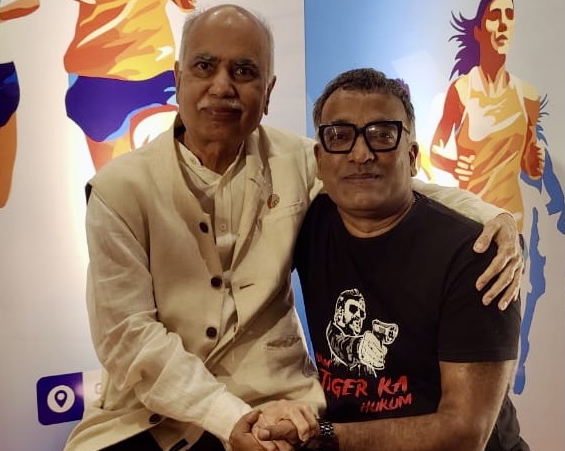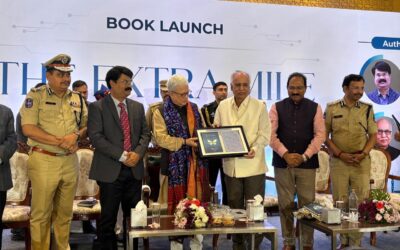
Maya, Science, and the Dance of Consciousness
For as long as I can remember, a quiet thought has drifted through my mind in the still hours between dusk and sleep: what if life itself is a simulation—an elaborate stage play in which we, vivid though we seem, may yet be characters animated by some higher intelligence? Even facial expressions change, as if we are possessed by some external energy.
The concept of Maya has been interpreted in various ways by sages, seers, and philosophers throughout the centuries. This cosmos is a dream of the Supreme Creator. Just as a dream is formed in the consciousness during sleep, the Absolute manifests this universe not out of necessity, but out of sheer abundance and playfulness (Lila). Creation is not some enterprise but a dance, where Maya becomes the stage on which consciousness experiences itself in infinite forms.
I often reflect on the disquiet of our times—wars that swallowed young soldiers, terrorist attacks killing innocent people, a virus that brought the globe to its knees, and a climate in turmoil. It revives the old question: are we participants in a simulation, scripts running on algorithms we do not write? Does Maya continue to hold us in an unreal loop, testing us again and again? Two dear scientist friends have sketched its modern contours with striking clarity.
My friend Dr Ashok Tiwari, a biologist, once paused as if stepping between thoughts and told me, like the body is created out of code written in DNA, the mind is also an ever-flowing stream of consciousness. Dr Tiwari has been delivering excellent lectures on this theme for several years after his superannuation from CSIR. He declared in one of his podcasts, “The universe is a simulation of Cosmic Intelligence and the algorithm is changing every instant.”
Then there is Prof. Ramesh Loganathan, the computer scientist, whose eyes light up behind his glasses when he speaks of virtual worlds. “Look at what we’ve done in fifty years—entire forests regrowing in pixels, avatars falling in love, armies clashing without real blood.” There is no king or throne in the virtual world (computer science) only workstations (called consoles) and yet there is power, excitement and pride everywhere.
And in the midst of these reflections came word of a recent article: “We Live in the Matrix,” by British physicist Melvin Vopson, published in the Science Journal. Vopson claims he has uncovered evidence of simulation—not vague speculation, but a hint traced in the very behaviour of gravity. He proposes that gravity—and indeed the universe itself—emerges from a process of data optimisation and compression.
Indian philosophy had a sense of this long ago: the Vedas describe the universe as emerging from Shabda (sound/vibration, i.e., information). Modern ‘infodynamics’ echoes that intuition: reality itself may be structured as evolving information. American physicist John Wheeler (1911–2008) said it in three words: “It from bit.” Matter, energy, and even spacetime may be emergent from information processes. Bits cannot exist without a physical substrate (such as a photon, an electron, a spin, or a mark on paper).
Just as there is no free energy, there is no free information. To gain information about a system, you must invest energy through observation, computation, and measurement. Information can only be reduced to its basic pattern, retaining some repetition to correct mistakes and some novelty to convey meaning. DNA is tightly packed but still has built-in repetition to resist errors. Information flows in one direction, like time: DNA produces proteins, but proteins cannot produce DNA.
Even when systems appear to ‘lose’ information (like a book burning or matter falling into a black hole), the information is not annihilated; it disperses, scrambles, or becomes inaccessible. Diseases are inherited. Subsequent generations carry the diseases even after the death of people. Dormant genes that have been inactive for several generations become activated when they encounter new environments like radiation or chemicals. Information is conserved at the deepest level of physics.
As in a computer simulation, the universe doodles itself more efficiently: it binds particles together, reducing informational complexity, much as a program consolidates data to save processing power. Instead of tracking every particle separately, the universe groups them into wholes: atoms, molecules, stars, galaxies. Each new level of order is like a higher-order data structure, an elegant shorthand that allows the cosmic computation to proceed without drowning in its own detail. In this way, the world is both infinitely rich and surprisingly efficient: it hides its bits in patterns, its chaos in symmetry, its noise in music.
Ancient wisdom calls it illusion, Dr Ashok Tiwari names it script, Prof. Loganathan reads it as code, and Vopson discerns in gravity’s pull an architecture—compressed, ordered, a simulation in motion. Amid this confluence, I often circle back to the scripture’s promise: that beneath whatever façade exists, there lies a witness—the Atman—untouched, serene, outside and beyond the mechanism of Maya.
Yes, pandemics rage. Forests burn. Seas rise. We are fragile and not in control. Yet, in the notion of simulation—even in that unsettling idea—there is space for dignity. These trials aren’t happenstance; perhaps they are scenarios to test our compassion, our resilience, our capacity to act with awareness within this seeming illusion.
Poets and philosophers have described life as a river—always flowing, impossible to grasp. I feel that the current in my thoughts is the puzzle of reality versus simulation, which may be less urgent than how we live inside it. An illusion, after all, still demands care. A dream garden wilts if ignored; a simulated earth still calls for tenderness. What if tenderness is a command?
On the sidelines of the Cancer Run event organised by mutual friend Dr S. Chinnababu, Prof. Loganathan lovingly held my hand and said, “We cannot rewrite the code—or so it seems—but we can choose how we move within it. To live with intention as though each gesture matters. To acknowledge suffering as sacred. To love as though love might breach the veil of Maya and touch something eternal.”
I remain—uncertain, searching, yet anchored. As the 2017 Nobel Prize-winning Japanese-born British novelist Kazuo Ishiguro has famously uncovered the abyss beneath our illusory sense of connection with the world in his narratives, what we are living is a fleeting performance where roles shift, masks fall, and truth glimmers in the pauses. To be both actor and witness is to live with awareness, to hold in balance the part we play and the stage upon which we play it.
Whether this life is real or an illusion, it is the only stage at which we can be conscious. And the question we must live, not resolve, is whether we can become not just performing actors, but also spectators watching the play.
MORE FROM THE BLOG
The Lost Wisdom of Our Kitchens
There is a peculiar magic in the things we eat—an intimacy so daily, so habitual, that it becomes almost invisible. Food enters our bodies the way air enters our lungs: without ceremony, without question. We assume its shapes, its colours, its textures, as though they...
The Extra Mile
Shakespeare once reminded us that life is but a stage; listen closely, and beneath those familiar words, you can hear the soft hum of entrances and exits. Each of us arrives in medias res, as the Latins say—dropped into the middle of a vast, unfolding drama whose...
The Theatre Within
I have been fascinated by Shakespeare, as most of those fancy English phrases and words that enchanted me were created by this one man who lived in England during 1564–1616. I was always intrigued by how one individual could produce such a great body of work that...




The dance of consciousness is a rhythmic play between wakefulness and sleep — two partners moving in eternal balance. In the waking state, consciousness turns outward, weaving itself through sensations, thoughts, and actions. The world feels solid, urgent, real. Yet as we drift into sleep, that same consciousness withdraws its gaze, folding back into silence and rest. Dreams become the soft choreography of the inner mind — fragments of the day reimagined in symbolic motion.
Waking and sleeping are not opposites but movements in one grand cycle: expansion and contraction, expression and renewal. In wakefulness, we learn; in sleep, we are healed. Together they sustain the flow of awareness — the endless dance through which life renews itself, night after night, day after day.
Sir,
भटकते मन के बारे में कबीर का सबसे प्रसिद्ध दोहा, मन की माला के रूपक का उपयोग करके, नासमझ कर्मकांडों की आलोचना करता है। वे उस व्यक्ति के पाखंड की ओर इशारा करते हैं जिसके हाथ मालाओं में व्यस्त रहते हैं जबकि उसका मन सांसारिक विचारों में खोया रहता है।
माला फेरत जुग भया, फिरा न मन का फेर।
कर का मनका डार दे, मन का मनका फेर॥
The dance of consciousness is the natural flow of awareness through everything that exists. It is the movement between thinking and feeling, seeing and being seen, knowing and experiencing. Like a graceful dance, it connects the mind and the world around it. Every thought, emotion, and discovery is part of this ongoing rhythm. Through this dance, life becomes aware of itself — and we realise that we are both the dancers and the dance itself. Thanks for making us reflect.
Dear Sir, Greetings! It’s a profound and beautifully written blog post that weaves together ancient philosophy, modern physics, and computer science!
“A truly insightful synthesis of ‘It from bit’ and ‘All is Maya.’ The Gita teaches that whether this world is a dream or code, our duty (Dharma) remains the same. The crucial question, as you beautifully put it, is not whether we can rewrite the code, but whether we can act with awareness and intention—a perfect articulation of Karma Yoga for the modern age. Thank you for this deep reflection.” Warm Regards,
Moh Maya is something that has been around for ages, and most people are unable to free themselves from the invisible strings of Moh Maya that tie them up.
Beautifully crafted and very relevant article in today’s world, more particularly for the younger generation. Best Wishes.
As a software engineer, the notion of life as a cosmic simulation feels strangely intuitive. Every system I build runs on hidden rules, just as our universe follows its own elegant logic. Bugs, edge cases, and updates mirror the unpredictability of human experience. If reality is code, consciousness may be the ultimate emergent feature—an unexpected yet vital output. Still, knowing an app is simulated doesn’t make the user’s journey any less meaningful. It’s the interactions, the stories, the data flowing through it that matter. Perhaps our role isn’t to “break the code” but to debug ourselves, learning with each iteration.
The idea of life as a cosmic simulation invites us to question the very fabric of reality. If our world is a grand program, then consciousness itself might be the code’s emergent property, not an accidental flicker but a deliberate feature. This view dissolves rigid notions of fate and free will—are our choices truly ours, or scripted lines in an infinite algorithm? Yet, even within a simulation, meaning is not diminished. Like characters in a story, we can still act, love, and create. Perhaps the purpose of this “cosmic software” is not control but self-discovery through endless iterations.
So beautifully written, Arunji. I found myself reading it multiple times, each pass revealing fresh connections between the layers you weave together so subtly. Whether it’s Maya, Script, Code, or the architecture of gravity, the deeper lesson is how one can move beyond mere performance to become a steadfast, impartial observer. That is the spiritual challenge many attempt—and only a few truly meet.
This article does a superb job of blending ancient wisdom with modern insight. In the midst of everyday life, it’s a breath of fresh air—an invitation to pause, reflect, and renew perspective. Thank you for crafting such a gift.
The human mind is not merely a machine governed by biology or the cold rules of cognition. It is, rather, a dance of consciousness—fluid, unpredictable, luminous—constantly weaving patterns that transcend the boundaries of neurons and synapses. Biology offers us the stage, the rhythms of chemistry and electricity, but the dance itself carries a quality that cannot be reduced to mechanics. Consciousness is not a sum of parts but a symphony, arising in flashes of awareness, intuition, imagination, and meaning.
In this dance, thought and emotion whirl together, dissolving the rigid lines of rationality into something larger—an ongoing performance of existence. Logic and memory may set the tempo, yet the improvisation of insight and wonder writes melodies that biology alone cannot explain. When we pause to reflect, dream, or create, we witness a choreography that transcends evolutionary utility, reaching toward mystery. Behind every rule lies freedom, and behind every thought, a silent pulse of being that moves beyond measure.
Dear Sir, This is a beautiful blog that effectively connects ancient wisdom with present-day science. For me, the important line in the blog is WE CANNOT REWRITE THE CODE, SO WE CAN CHOOSE HOW WE MOVE WITHIN IT. This one sentence proves that there is something beyond all our brilliant efforts and scientific achievements. The only positive aspect of this hardwired code is that it provides us with the flexibility to choose how we live within the hard-coded boundaries.
I am reminded of Sher by Rahat Indori
समन्दरों में मुआफिक हवा चलाता है
जहाज़ खुद नहीं चलते खुदा चलाता है
So the choice is very simple, live life with compassion and kindness within the code already existing.
I’m struck by how you’ve woven together the Vedic idea of Maya, Wheeler’s “It from bit,” and Vopson’s simulation hypothesis into a single, flowing meditation. What stays with me most is the way you end: that even if life is an illusion or a program, tenderness, intention, and compassion are still real choices within it. Thank you for giving voice to a question so many of us sense but rarely articulate: not just whether we are in a simulation, but how to live meaningfully if we are.
Dear Professor, Thank you for the beautiful piece of reflection on the concept of Maya and human endeavours to unravel life’s mysteries.
In Africa, whenever there is a limit to human understanding, people always defer to supernatural powers.
I guess it’s not just about Africa. Humanity must acknowledge the principle of Divine Superiority: God’s thoughts and plans are on a scale so vast that they are beyond human comprehension, much like the expanse of the heavens compared to the earth.
Arunji, your reflections here beautifully bridge ancient wisdom and modern science. Whether life is code, dream, or dance of consciousness, your words remind us that how we live—our compassion, awareness, and tenderness—matters more than solving the mystery itself. Prof Ranesh Loganathan is my dear friend, and I love his energy.